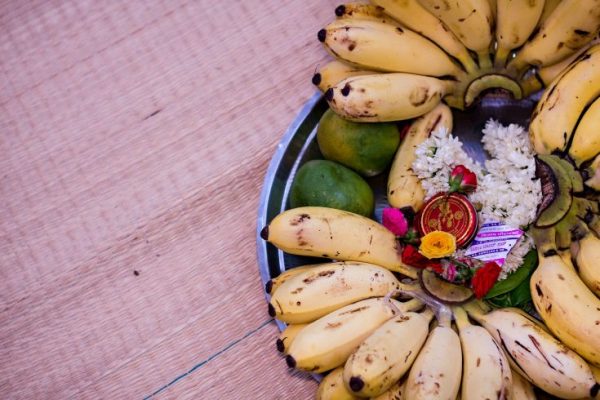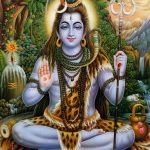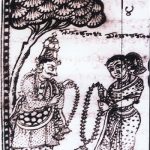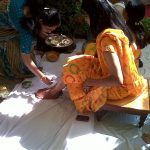The charm and deep meaning of the Iyengar wedding rituals are fascinating. Even the most modern of Iyengar families cling to their Iyengar wedding ceremony traditions when it comes to wedding rituals. There are some variations depending on the state that the family hails from, but the important ceremonies are the same.
Matchmaking or Thirumana Porutham
The bride and groom’s respective parents seek a suitable spouse for their child from families in the same community and of a similar status. A priest compares the Jathakam or astrological birth charts of the prospective pair, and this process is called Thirumana Porutham. Thirumana porutham gives an idea about whether the couple is a good match for each other or not. If the match is suitable, the families meet and decide on whether to finalize the match. The engagement ceremony may be held in the bride’s home or in the Kalyana Mandapa.
Nichyadhartham
The bride’s father starts the Iyengar wedding ceremony proceedings with a Vigneshwara Pooja seeking the blessings of Lord Ganesh.
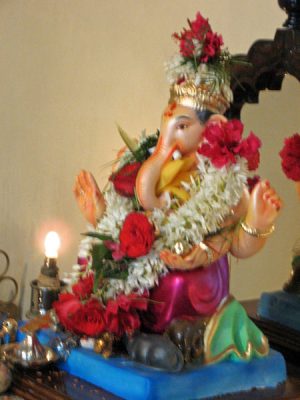
The priest writes the Lagna Patrikai, which specifies the marriage time. The bride’s and groom’s parents exchange the Lagna Patrikai placed on Thamboolams (plates) laden with fruits, flowers, betel leaves, and arecanut. The exchange of plates symbolizes the agreement and commitment to the marriage by the families of the bride and the groom.
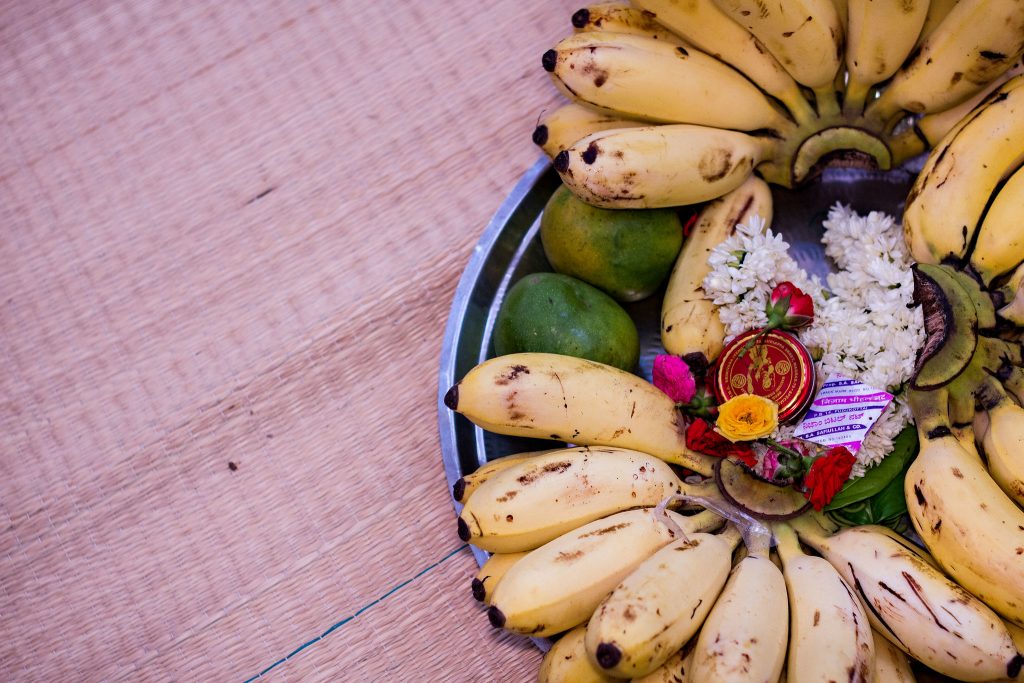
The groom’s father blesses the bride and hands her a Nichyadhartham saree on a Thamboolam. The groom’s sister accompanies the bride to her room and helps her wear the gifted saree. The bride returns wearing the new saree and sits down. Her future sister-in-law applies sandalwood paste and Kumkum on her. She garlands her, feeds her sugar, and blesses her with flowers. She ties the contents of the Thamboolam and some turmeric into the Thalapu of the bride’s saree. The priests say mantras and the elders bless the couple. The couple exchanges rings and the families exchange gifts of new clothes. The families enjoy a meal together.
Viratham Or Fasting
The bride and the groom keep a fast before the Iyengar wedding rituals. The bride and her family fast from the day before the wedding for the couple’s well-being. The groom and his family also fast from the day before the wedding. The bride’s father should have performed the Jadakarna (drawing the horoscope), Namakarna (naming), Annaprasna (first feeding of rice), and Chooda Karna (first hair cut) for his daughter to qualify her as a Brahmin.
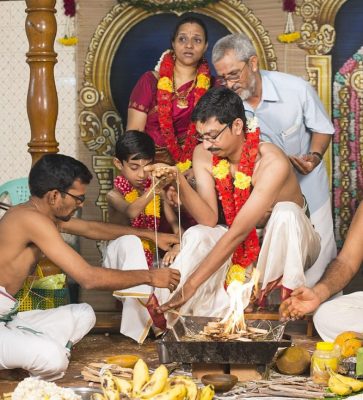
The groom’s father should have also performed the Jadakarna, Namakarana, Annaprasana, and Chowlam for his son as part of the Upanyanam ceremony to qualify him as a Brahmin. If any of these ceremonies are missed, they are performed before the wedding. An unmarried Brahmin man wears a three-stringed Poonool. The elders change this to a six-string Poonool before marriage. The bride’s mother draws a black dot on the Groom with Mai (Kajal) to ward off negative vibrations.
Pandalkal
The Pandalkal ceremony is held to bless the Kalyana Mandap, where the Iyengar wedding rituals are to be held.
Nalungu
The bride’s and groom’s families host a Nalungu ceremony for them. They make a paste of sandalwood and Kumkum and apply it to the hands of the bride and the groom respectively. A Kappu of white thread soaked in turmeric paste is tied to the wrist of the bride and the groom individually. They wear this protective thread till the end of the Iyengar wedding rituals. The thread indicates that they are the bride and the groom. The bride and the groom do not leave the Kalyana Mandapam after the Kappu and until the Muhurtam ritual is over.
Kasi Yatra
The groom playfully acts as if he desires to renounce worldly life and leave for Kasi. The bride’s father convinces him to stay and embrace life as a householder.
Oonjal
The bride and the groom exchange garlands and sit on a swing. The women present sing songs. The Piddishuttal ritual wards off the evil eye from the couple.
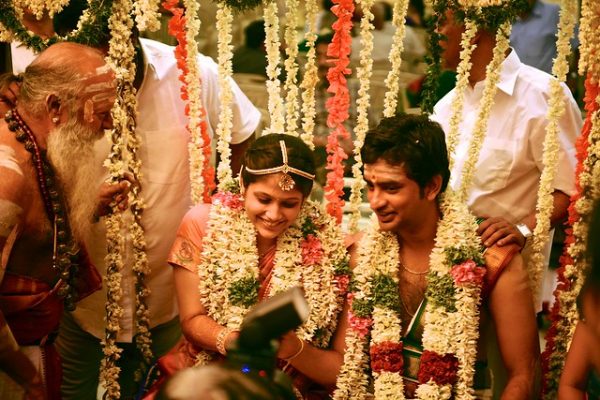
Kanyadaan And Mangalya Dharanam
The bride sits on her father’s lap and the groom ties a gold Thali or Mangalayam on a yellow thread around her neck. This is the central ritual in an Iyengar wedding. The relatives present shower the couple with Akshat (uncooked rice) as a blessing.
Homa And Saptapadi
The priest lights the Homa fire, and the wedding rituals begin. The bride and the groom participate as instructed by the priest, and the couple circumambulates the Homa fire seven times. The bride wears a toe ring as an indication of her marital status.
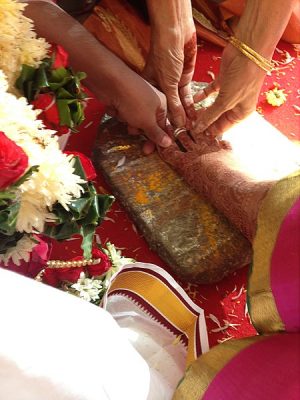
Nagoli Vasthra And Gruhapravesham
The bride’s family welcomes the groom into their family while the groom’s family welcomes the bride into her new home.
Sambandhi Virundhu
Both the families serve a grand wedding feast for all the family members and guests present. In modern times, a lavish wedding reception is held at a wedding hall that is big enough to accommodate all the extended family and friends of the bride and the groom. A grand meal is also served at the reception.




